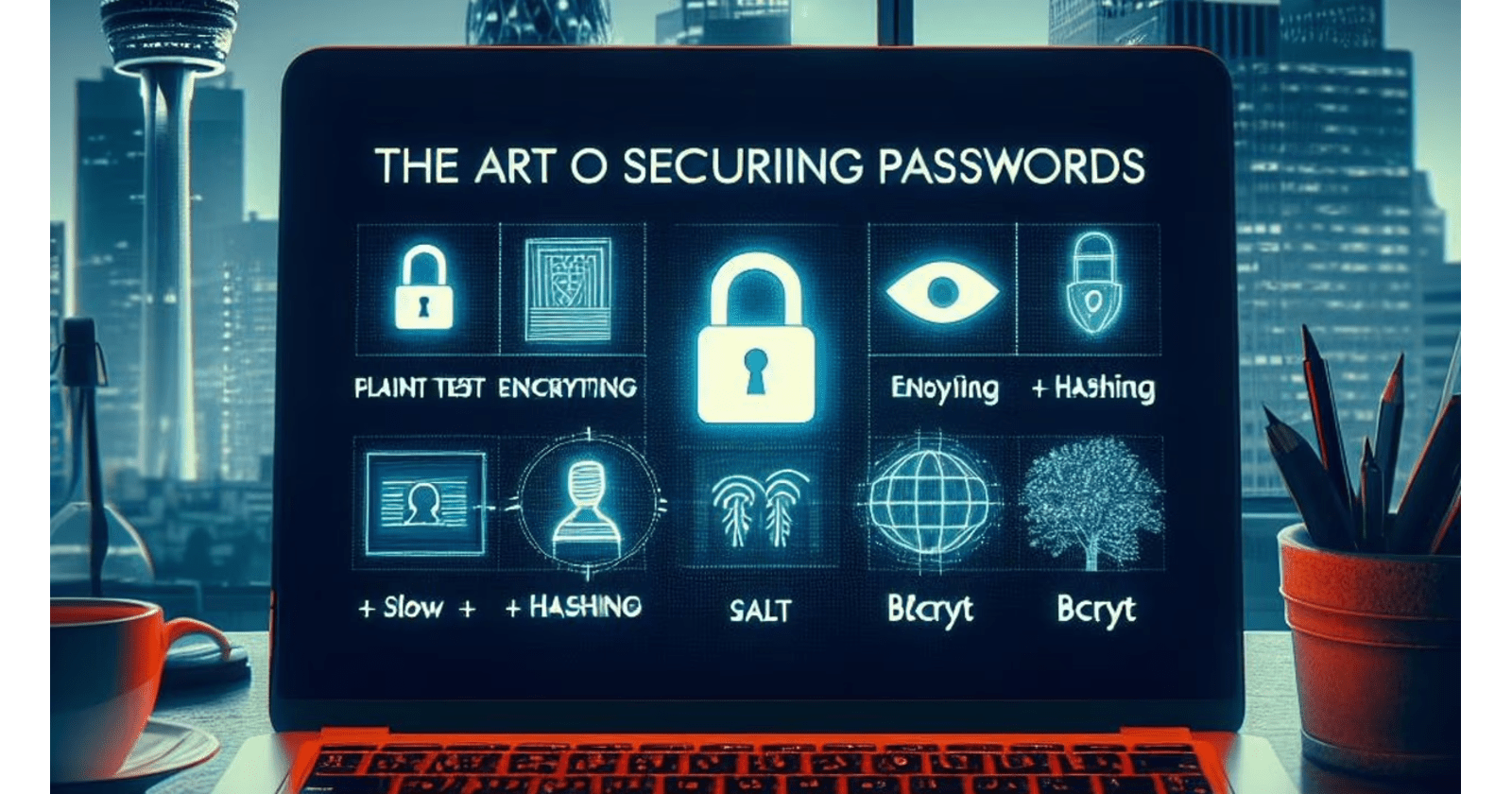Table of contents
- Storing Plain Text: The Vulnerable Foundations
- Real-Life Scenario:
- Encrypting: Adding a Layer of Complexity
- Real-Life Scenario:
- Hashing: The One-Way Street
- Real-Life Scenario:
- Hashing + Salt: The Unique Twist
- Real-Life Scenario:
- Bcrypt (Slow Hashing Algorithms): Adding Friction to the Attackers
- Real-Life Scenario:
- Not Storing Passwords: Outsourcing Security
- Real-Life Scenario:
- PREVENTIVE MEASURES:
- Conclusion:
In our interconnected digital age, the importance of securing user passwords cannot be overstated. Whether you're a website owner, a software developer, or a regular internet user, understanding the intricacies of password protection is crucial. In this comprehensive blog, we'll embark on a journey through various stages of password security, using real-life scenarios to illustrate each step.
Storing Plain Text: The Vulnerable Foundations
Storing passwords in plain text is a practice that has long been abandoned due to its inherent security risks.Imagine you're the owner of an online forum where users can discuss their favorite topics. In the early days of web development, it was not uncommon to store user passwords in plain text. Let's say a user named Alice registers on your forum with the password "Wonderland123." If a security breach occurs, all passwords, including Alice's, would be exposed in their raw, readable form, putting user accounts at significant risk.
Username: john_doe
Password: mySecretPassword
Real-Life Scenario:
The infamous 2012 LinkedIn data breach is a classic example where millions of passwords were exposed, highlighting the perils of storing passwords in plain text.
Encrypting: Adding a Layer of Complexity
To enhance security, encryption can be employed. Encryption involves converting the password into a coded format that can be reversed using a specific key. Imagine you decide to upgrade your forum's security by encrypting passwords. Using a symmetric encryption algorithm, you encode Alice's password into a format that can be reversed with a specific key. While this adds a layer of complexity, it still presents risks, especially if the key is compromised.
Username: john_doe
Encrypted Password: Xfj2k3lP...
Real-Life Scenario:
The Heartbleed vulnerability in 2014 exposed encrypted data, showcasing that even encryption is not foolproof if there are flaws in the implementation.
Hashing: The One-Way Street
Hashing is a one-way function that converts the password into a fixed-length string of characters. Unlike encryption, hashing is irreversible, making it more secure for password storage. Now, when Alice creates an account, her password is hashed using a cryptographic hash function, making it irreversible. However, using common hashing algorithms like MD5 or SHA-1 can be susceptible to rainbow table attacks.
Username: john_doe
Hashed Password: 1a2b3c4d...
Real-Life Scenario:
The breach of the Ashley Madison website in 2015 exposed poorly hashed passwords, emphasizing the need for robust hashing practices.
Hashing + Salt: The Unique Twist
To thwart rainbow table attacks, you decide to implement salting. Each user receives a unique random value (salt) that is combined with their password before hashing. Even if two users have the same password, their hashed values will differ due to the individual salts.
Username: john_doe
Salt: aBcDeF
Hashed Password: e5f4d3c2...
Real-Life Scenario:
LinkedIn learned from its 2012 breach and adopted salting to enhance password security in subsequent years.
Bcrypt (Slow Hashing Algorithms): Adding Friction to the Attackers
Bcrypt is like the heavyweight champion of password protection – deliberately slow and tough. It's not just a regular lock; it's the lock that makes hackers break a sweat. Bcrypt purposely adds a load of extra steps, creating a serious headache for anyone trying to guess passwords. This "slowness" isn't a flaw; it's a feature. Imagine hackers with super-fast computers – Bcrypt is like throwing molasses on their plans. It makes them work much harder and longer to crack passwords. So, in simple terms, Bcrypt is your digital bouncer, making sure only the right folks get in, and it's not a party for hackers trying to sneak in.
Username: john_doe
Bcrypt Hashed Password: $2a$12$1a2b3c4d...
Real-Life Scenario:
In 2012, Dropbox suffered a data breach, but because they had employed Bcrypt to hash passwords, the impact was minimized.
Not Storing Passwords: Outsourcing Security
As a forward-thinking developer, you explore alternatives to storing passwords altogether. You integrate "Sign in with Google" or other third-party authentication methods, eliminating the need to maintain a password database. Users benefit from the added convenience and security of not relying solely on a username and password combination.
Real-Life Scenario:
Many modern apps and websites, including Airbnb and Spotify, allow users to sign in using their Google or Facebook credentials, reducing the risk associated with password storage.
PREVENTIVE MEASURES:
To mitigate dictionary attacks, organizations enforce strong password policies, promote the use of unique and complex passwords, and implement multi-factor authentication.
Conclusion:
In the ever-evolving landscape of cybersecurity, the journey from storing passwords in plain text to implementing advanced security measures like Bcrypt and third-party authentication is critical. Real-life examples serve as valuable lessons, emphasizing the importance of staying informed about emerging threats and adopting best practices to fortify the fortress that safeguards our digital identities. As we navigate the complex realm of password security, continuous vigilance and innovation are paramount in the ongoing battle against cyber threats.
